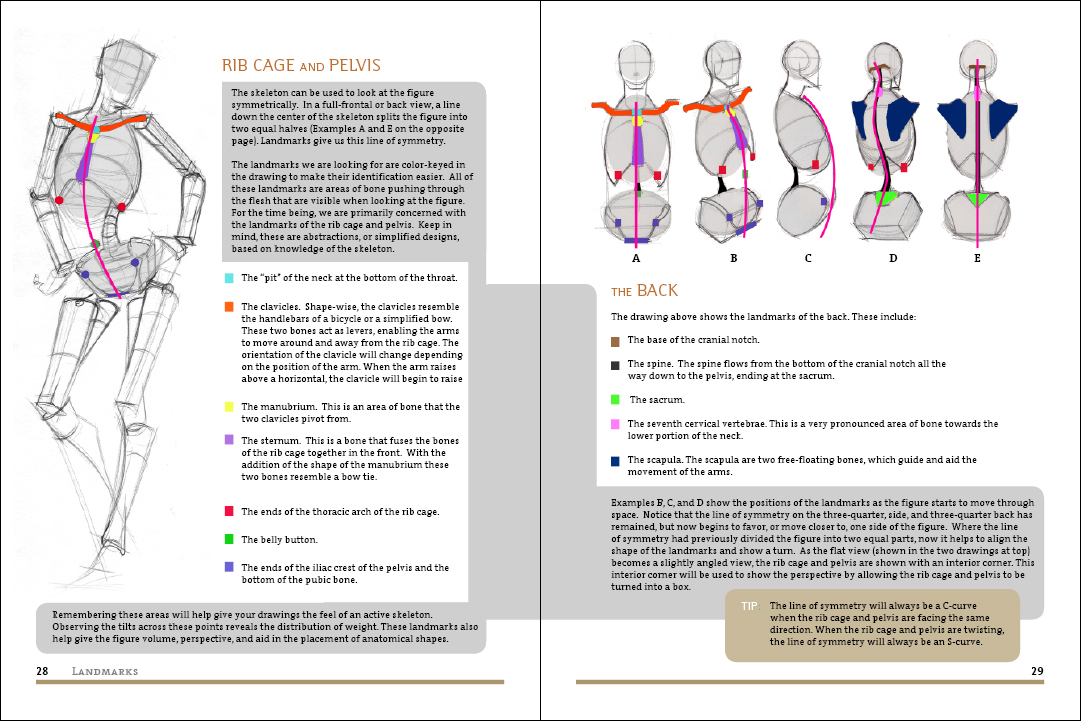Light reading this week… (you’re welcome!)
Read the 2 Pages on Anatomical markers below. (HINT: It will be helpful to print these and paste them into your sketchbook.)
Explain in your comments why knowledge of these markers will be useful in your drawings. Feel free to ask questions about the topic! You may illustrate your points with your own sketches!





Anatomical markers are very useful in our drawing. It makes the drawing more organic by revealing its direction, weight, balance, etc. it makes it a lot easier to draw action just by using the anatomical markers. Just like we learned in the class today, it is very important to know how to draw from inside out.
Using anatomical markers In our drawings make the human figure look more natural. its useful to locate the anatomical markers when drawing a human in a different position. I think that locating the anatomical markers can help you understand the movement of the human body more.
This method is very useful. It helps us to get the feel of an active skeleton. And we much more clearly know the step of drawing a figure. Besides, it gives us an example what shape will be the spine, like the spine will be s-curve when the rib cage and pelvis are twisting. All the knowledge is very helpful for us to know how to draw a figure.
Anatomical landmarks are very useful for our drawings. it helps us understand the human figure more when it’s doing an action. I also think it’s important to notice the change of the spine when the human body is turning. The spine can curve when the person is facing a certain direction.
Anatomical landmarks allow us to know our alinement and in our 2D drawings we can also measure our figures exactly to 3D figures. Balance, direction, and weight is important when having landmarks in mind because we could be drawing a thicker version of a woman, would we know just from memory how proportionally small or large her breast are or how wide her legs would be.
Anatomical markers are essential when drawing the body. When drawing the human figure, anatomical markers are incredibly helpful as they help keep the drawing in proportion. They also help in showing us where the body curves or points out making one’s drawing look more realistic.
Knowledge and consistent awareness of the anatomical markers will aid one in producing a more fluid, organic and life-like figure.
In addition, (Piggy banking of what Marc said) the awareness of spine direction serves as a great tool, simplifying the identification and placement of the spine-torso relationship status (i.e., C curve when ribs & pelvis are in same direction).
This is very useful method because it helps pin-point where some of the main body parts are, and with that it helps to draw out the organs and structure. This also helps us to understand the body part of the human. Also when it comes to having a layout of the body the spine helps it more to know where and how to draw the body.
The drawings really helped me wrap my brain around angles when looking at B and D. The tip at was also really cool too, I liked the S-line part and I think it will really help a lot of people. Also I took note of the clavicles, I’ll try next time to not forget!
Anatomical markings are very useful because it helps with identifying parts of the body. In addition to anatomical marking helps with identifying parts of the body, it also creates rhythm by making the figure look more natural, when it performs an action.